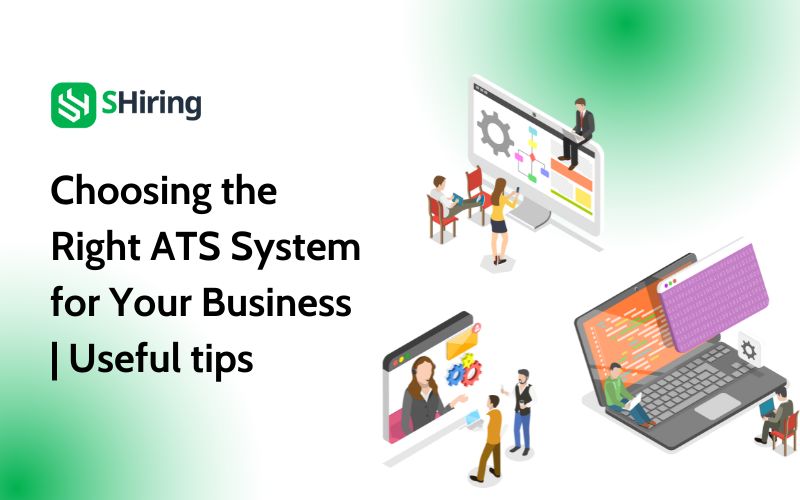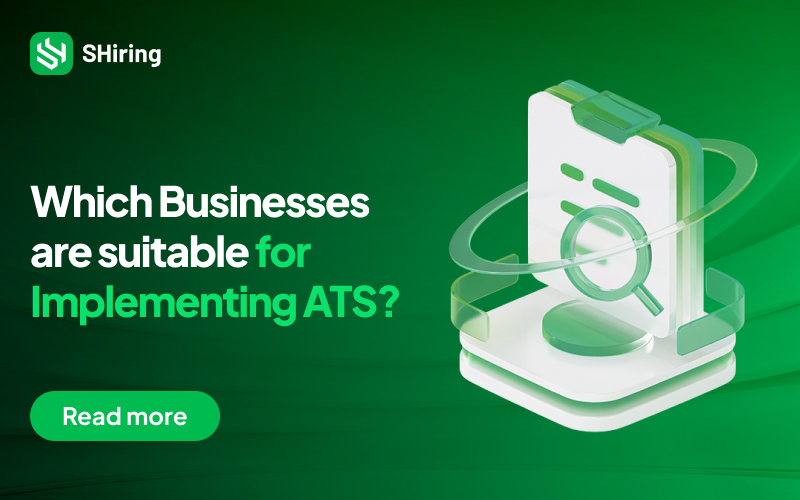Recruitment challenges include attracting quality candidates, reducing costs, and managing administrative tasks. SHiring will share tips on selecting the right ATS system, providing useful advice to choose an optimal ATS for your business.
What are the primary obstacles you face in the recruitment process?
Attracting quality candidates
In an increasingly competitive job market, especially with the rise of new tech companies, attracting quality candidates is becoming more difficult. Even if companies have career websites and online application processes, an unfriendly interface or complex application process can lead to missed opportunities with potential candidates.
To create the best recruitment experience, companies need to develop user-friendly career sites and simple application processes to attract and retain high-quality candidates.
Readmore: 7 Aspects of ATS implementation: Improve candidate experience
Reducing recruitment costs
One simple way to reduce recruitment costs is to limit reliance on external recruitment agencies. However, internal recruitment and HR teams are often too busy with their current duties.
Therefore, businesses often rely on recruitment agencies to assist with filling some or all vacant positions due to a lack of time for screening numerous applications and a lack of recruitment marketing expertise within the internal HR team. Using external recruitment services is considered a straightforward solution.
However, using recruitment agencies or headhunters for senior positions is reasonable as they can leverage their existing networks. For lower and mid-level positions, using external recruitment services can be more costly. Additionally, recruitment agencies have limited access to both active and passive job seekers.
Read more: How much does an Applicant Tracking System cost ?
Simplify administrative processes
Administrators often handle a large volume of emails and perform repetitive tasks, which is not only time-consuming but can also lead to fatigue and mistakes.
Recruitment administration is often considered quite boring and monotonous. This is one reason many companies outsource recruitment services instead of recruiting directly. They want to delegate the recruitment tasks to agencies.

Finding Talent
Although there are many candidates available on the market, finding the right candidate for a specific position is still challenging, especially in technical or specialized fields.
Spend less time on email and improve candidate communication
Frequent email communication can be time-consuming and prone to misunderstandings, particularly when there are hundreds or even thousands of applicants for a position.
Foster diversity and inclusion when hiring.
While many companies aim to improve workforce diversity, reality often falls short of expectations. Challenges include inherent biases and unfair recruitment processes.
Elevate hiring manager engagement
Some hiring managers may not be fully engaged in the recruitment process due to a lack of understanding of the process or insufficient support from technology and data, leading to delays or inaccurate decisions.
Crucial factors to take into account when selecting an ATS
Company size
When choosing an ATS (Applicant Tracking System), company size is an important factor. Large companies often have more complex needs when it comes to recruitment management, requiring a powerful ATS with many advanced features. Conversely, small companies may just need a system that is simple, easy to use, and lower in cost.
Read more: Which businesses are suitable for implementing ATS?
Number of recruitment
The number of positions to be filled also determines the choice of ATS. If a company frequently hires in large volumes, an ATS capable of managing a large number of candidates and complex recruitment processes is essential. Conversely, if the hiring volume is low, a simpler system may suffice.
Budget
The budget allocated for an ATS is crucial. ATS solutions vary widely in cost, from free or low-cost options for small businesses to high-end systems with many features for large enterprises. Defining a budget helps select a suitable system within financial means.

Connect with other HR systems
The ability of an ATS to integrate with other human resources management systems such as payroll, benefits, or employee performance management systems is very important. This integration helps synchronize data, minimize errors, and save time for HR departments.
User-friendly interface
An easy-to-use, user-friendly interface will help make the process of using the ATS more efficient. If the system is too complex, employees may have difficulty using it and take a lot of time to train. Therefore, an intuitive, easy-to-operate interface is an essential factor when choosing an ATS.
Reporting and analysis
The ability to create reports and analyze data is one of the important features of an ATS. The system should provide detailed reports on the recruitment process, the effectiveness of recruitment channels, and other related indicators. These reports help businesses evaluate the effectiveness of recruitment strategies and make decisions to improve future recruitment processes.
Tips useful when choosing ATS
Choosing the right applicant tracking system (ATS) is an important process for every organization, especially those with large recruitment needs. Here are some useful tips to help you choose the right ATS.
Determine your needs
Before you start looking for an ATS, you need to clearly define your organization’s specific needs and requirements. This includes:
- Recruitment scale: You need a system that can handle the number of candidate applications you anticipate receiving.
- Essential features: Determine what features are essential to your recruiting process, such as candidate profile management, interview scheduling, integration with other tools (e.g. social media, calendar,email).
- Budget: Set a specific budget and look for ATSs that fall within this price range.
- Number of users: Determine how many people on the recruiting team will use the system to ensure that it has adequate support capabilities.
Evaluate through Demo version
Before deciding to purchase any ATS system, ask the vendor for a demo. This is an important step so you can directly experience the system’s features. When participating in the demo, please pay attention to:
- User interface: Is the interface friendly and easy to use? Can your employees quickly become familiar with the system?
- Actual features: Does the system have the features you have identified as necessary? Ask your provider to explain specifically how these features work.
- Customization capabilities: Does the system allow you to customize to your organization’s unique needs?
- Speed and performance: Does the system operate smoothly and without interruption during use?

Read customer reviews
Reading reviews from current and previous customers of an ATS provider is a great way to better understand the quality and effectiveness of the system. Explore these insightful resources for further information:
- Use resources such as software review sites (e.g. Capterra, G2)
- Forums and social networks: Industry forums or groups on social networks (LinkedIn, Facebook) can provide comments and practical experiences from industry experts.
- Case studies: Case studies shared by the vendor can provide insight into how the system has helped other organizations improve their recruitment processes.
Ensure the confidentiality and integrity of your data remain intact
When using an ATS system, candidate data is a critical asset and needs to be protected. Make sure the ATS provider has strong security measures in place to protect your data. Check the following factors:
- Compliance with legal regulations: ATS must comply with data privacy regulations such as GDPR (Europe) or CCPA (California).
- Security certification: Check if the supplier has security certifications such as ISO 27001 or SOC 2.
- Privacy policy: Read your provider’s privacy policy carefully to ensure that your data will not be misused.
- Technical security measures: Does the system use security measures such as data encryption, firewalls, and intrusion detection systems?
By following these steps, you will be able to choose the right ATS system for your organization’s needs, helping to optimize the recruitment process and ensure the security of candidate data.
SHiring – The right recruitment management solution for your business
Let SHiring be your trusted partner in managing your recruitment process. With an intuitive interface and powerful features, SHiring provides a professional and efficient recruitment management experience.
SHiring is not just a solution but a powerful tool to optimize your recruitment process in the most professional and effective way. Test it out immediately and sense the contrast.
















